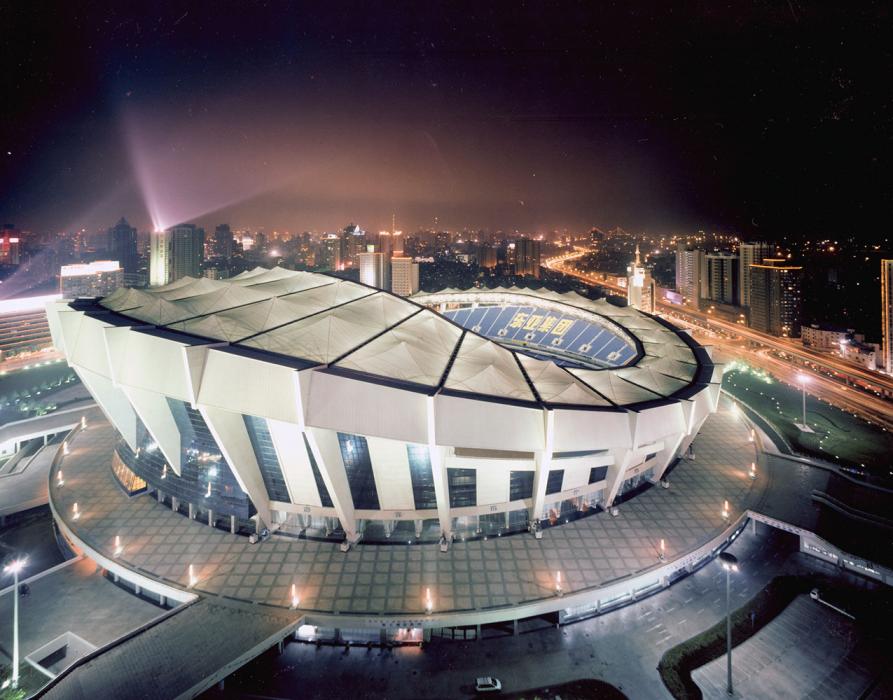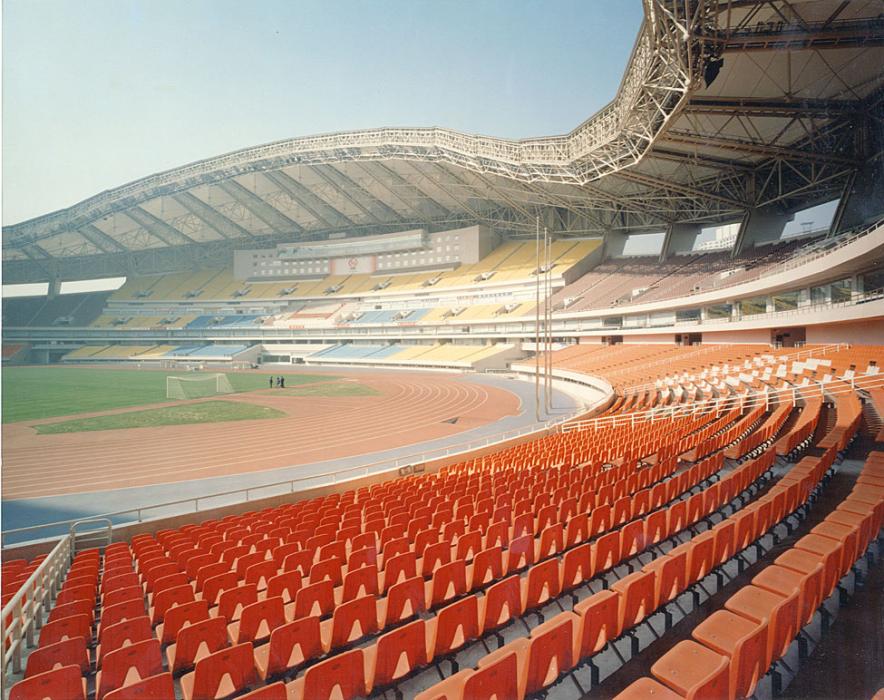
Shanghai Stadium
Shanghai Stadium is the city’s premiere multipurpose stadium that hosts soccer matches, track-and-field events and cultural and sports events.
Lead Contact

Scott
Schneider
Senior Principal & Structural Engineering Practice Co-Leader
New York
+1.212.367.2882
/
Project Details
Project Partners
Shanghai Institute of Architectural Design and Research, Shanghai Construction Engineering Group & Birdair
Owner
Shanghai Sports Centre
Location
Shanghai, China
Completion Date
Seating Capacity
80,000
Teams/League
Shanghai International Port Group FC - Chinese Super League
The World’s Longest Cantilevered-Steel-Truss Roof Structure
Built in time for the 8th National Games for the People’s Republic of China in 1997 and a host stadium during the 2008 Beijing Olympic games, Shanghai Stadium is the city’s premiere multipurpose stadium that hosts soccer matches, track-and-field events and cultural and sports events.
We provided structural design, advanced structural analysis and construction supervision services to the Shanghai Institute of Architectural Design and Research, Shanghai Construction Engineering Group and Birdair for this stadium, which was completed in 1997.
Highlights
- Our team designed the fabric roof system, a fast-track design-build portion of the project that was erected in less than three months.
- Large steel trusses cantilever as much as 73 meters over the stands and divide the roof into 32 trapezoidal bays.
- Our team used tensegrity concepts to design the long-span fabric roof, the first built in China.
- The roof, which consists of a continuous series of umbrellas supported by flying masts, rises and dips as it makes its circuit around the field, following the elevation of the back of the stands.
- The fabric covering consists of 28,900 square meters of Teflon-coated fiberglass – in 17 panel configurations – inserted into the bays.
- We also reviewed the main steel-truss roof framing structure and performed dynamic analysis to determine mode shapes.
- Our team provided this information to RWDI, who performed a wind tunnel study on the roof structure and a wind environmental study for the field.










